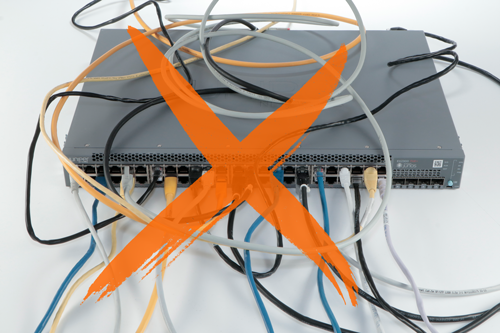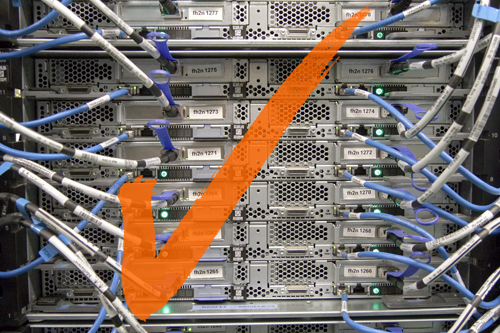What is the meaning behind IT infrastructure?
Classic IT infrastructure can be divided into three components to easily define the topic. Usually it contains hardware, software and networks. These elements work together to create a cohesive and efficient network, enabling enterprises to deliver their services effectively and maintain a seamless workflow. The symbiosis of physical and virtual technology can be expanded, supplemented and optimized at will and is a core element for enterprises. It is therefore important to keep the infrastructure stable and secure at any time and monitor it thoroughly to ensure communication between all network components at any time.
What types of IT infrastructure are there?
There are three types to be mentioned when talking about IT infrastructure:
On-premises: These physical network components are interconnected via cables and with the internet. This ensures network stability, reliability and fast connections. On-premises solutions are often favored by larger enterprises that require consistent network performance. They allow for high bandwidth and low data exchange times, though they can be more costly in terms of maintenance and expansion compared to cloud solutions due to their reliance on hardware.
Cloud/wireless solutions: Clouds are for hosting data virtual. In most cases there are central servers which are available wireless. This flexibility makes cloud solutions ideal for users and companies operating from various locations. Cloud networks can also be used as “network as a service” where an external service provider hosts the network, and clients pay for the use. This can be ideal for smaller companies with limited space and budget. While cloud solutions are easy to set up and maintain, they may introduce higher latencies due to wireless transmission.
Hybrid solutions: Combining the advantages of both on-premises and cloud solutions, hybrid networks can be tailored to meet specific needs. They provide stable bandwidth while allowing for remote work, offering significant flexibility in expansion and upgrades. However, managing hybrid networks can be more complex, requiring careful monitoring and coordination of both physical and virtual components.
Why is IT infrastructure this important?
Especially in service industries success depends on a functional and optimized IT infrastructure. With high latencies and insufficient data supply customers could go through a negative experience and conversion could sink. Outdated infrastructure can also slow down market launches and enhancements or in the worst case disable them. With a functional IT infrastructure there is a measurable impact on productivity because teams can communicate more easily independent from their workplace and services work faster. Customers can be satisfied faster and their overall experience enhanced. With an optimized infrastructure monitoring is made easier and more precise as possible failures can be recognized and solved faster. An overall win for companies.


How does an optimized IT infrastructure look like?
Transitioning from theory to practice, key elements of an effective IT infrastructure include high-performance storage systems and regular backups to safeguard data. Furthermore, it is inevitable to have low latencies to keep data flow constant and fast. A special focus should be on keeping the network failsafe. Which leads to security. With an optimized and fortified network cyberattacks and data breaches can be prevented or at least reduced to a minimum. This also improves customer satisfaction and trust.
An efficient and clever managed network offers the chance to supply bandwidth where it is needed. Prioritizing and deprioritizing data streams can lead to higher efficiencies and smoother processes. Last but not least: physical and virtual management of network components is inevitable. Devices should be named to be easily identified, and cables should be organized without any wild cross wiring. This ensures easy maintenance, debugging, monitoring and customization.
What future is there for network infrastructures?
Emerging technologies, such as artificial intelligence, are becoming increasingly relevant in the IT sector. Early adoption of AI can provide insights into its benefits and drawbacks, enhancing workflows and management. As hardware continues to advance, it will further improve data processing and communication within network components. The evolving landscape of company structures, with a rise in hybrid and remote work, necessitates that businesses upgrade their infrastructure to more flexible and modern solutions to accommodate employee needs.
Individual solutions for a flawless IT infrastructure
IT-market.com is the first address if you are searching for components for your network demands. As experts for sustainable hardware, we gladly support you to find the best solutions for you. In our web shop you can find refurbished or new switches, server, storage devices or security. which suit your IT environment.
